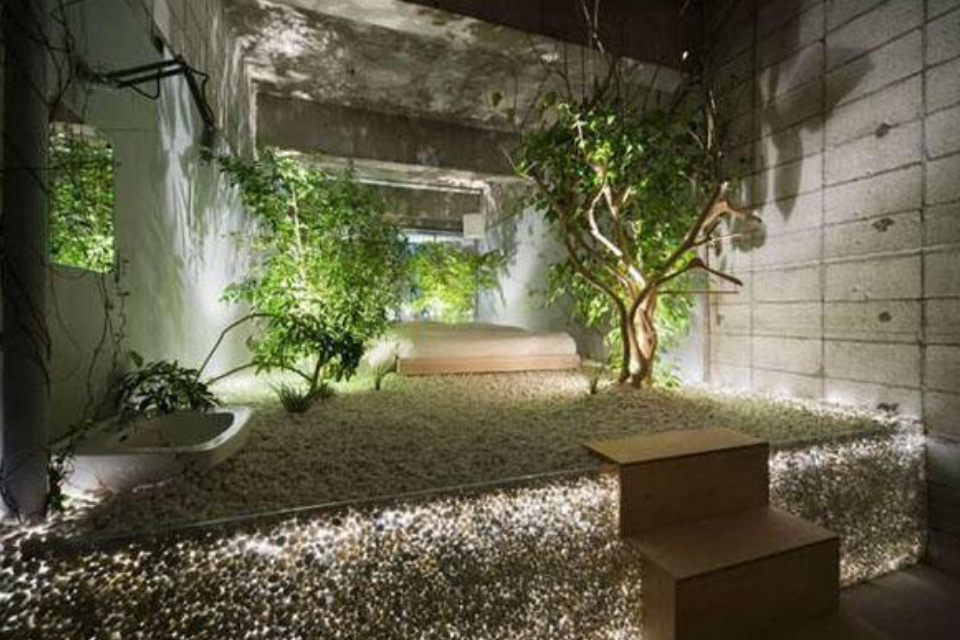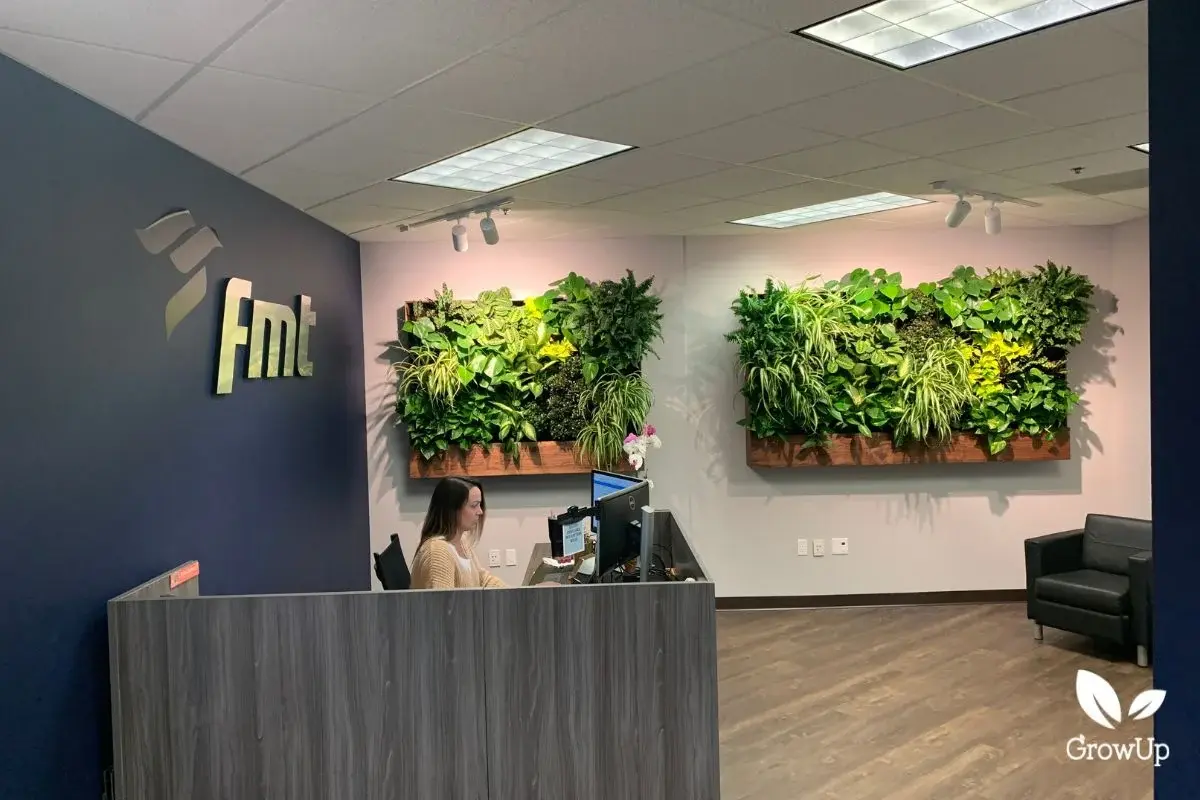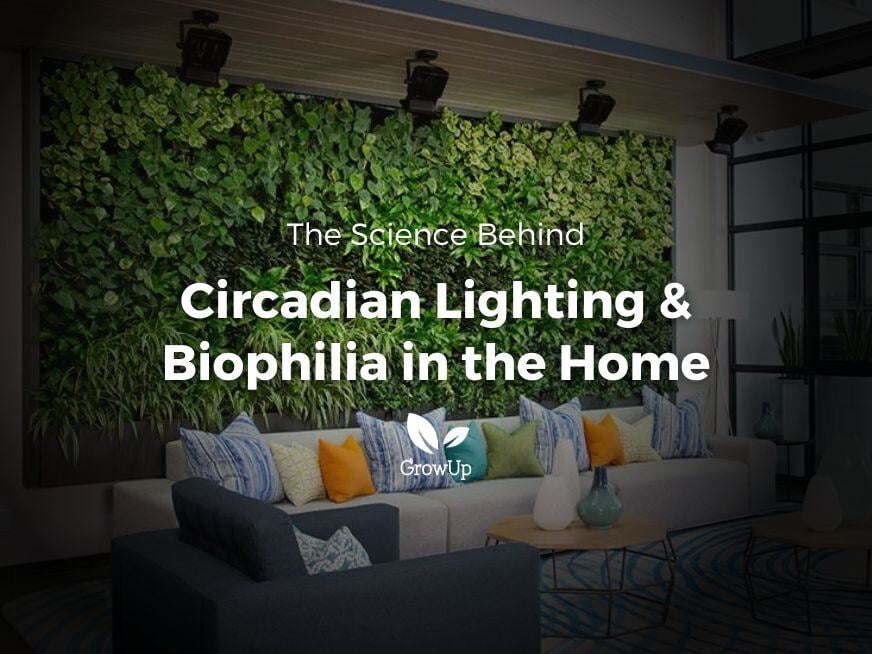Overview
In the past couple of years, the idea of greenery indoors and in our innate surroundings has taken off. From small house plants, to large indoor greenwalls, the demand for green integrated into our spaces is only growing. This is not only because of the beauty that plants bring to our surroundings, but also due to the evidence that there are many health and wellness benefits to incorporating biophilic design into our everyday lives.
Many studies have been done to support the idea of biophilic design aiding in overall wellness, and the amount of research done has only increased support in greenwalls and green living’s rise in popularity. Within the past 5-10 years, the rise in studies on this topic has grown immensely. This blog will outline 4 ways biophilic design is integral to our well-being, supported by key articles that, through the conduction of studies, show the direct benefits of green spaces and biophilia.
-1.jpg?width=600&name=Email%20Banner%20(7)-1.jpg)
1. Plants in an office environment positively effect attention, creativity and productivity.
In the article, “Biophilic design and office planting: a case study of effects on perceived health, well-being and performance metrics in the workplace,” by Nalise Hahn, Emmanuel Essah, and Tijana Blanusa, a study is conducted in a workplace environment. The study consisted of putting potted plants in individual offices, and then removing them from the office.
From questionnaires after conduction, it was found that introducing plants into offices gave the participants a positive effect of attention, creativity, and productivity. Furthermore, when plants were removed the participants felt a sense of negativity in regards to attention, productivity, stress and efficiency. This study is a great asset in supporting the notions of changing the office environment, not only creating an aesthetically pleasing look, but also maximizing the positive effects on employees.
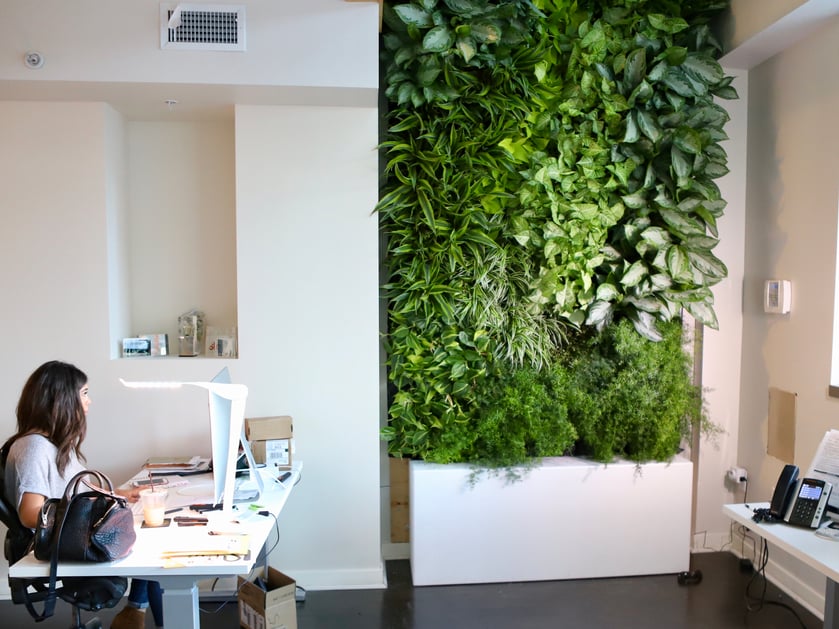
2. Natural elements in a workspace result in higher levels of creativity and wellbeing.
The 2015 Human Spaces Report, “The Global Impact of Biophilic Design in the Workplace,” focused on the human response to biophilic design and the supporting factors of biophilia that contribute to wellbeing. This included 7,600 participants, all office workers, in 16 different countries.
At the conclusion of this study, it was found that participants with natural elements in their work environments reported a 15% higher level of wellbeing, 6% higher level of productivity, and 15% higher level of creativity than without natural elements. Research further showed that workplaces with nature gave employees feelings of happiness and motivation versus those without. Furthermore, the color green present in an office environment had a significant effect on workers’ motivation, productivity, inspiration, happiness, creativity, and enthusiasm.
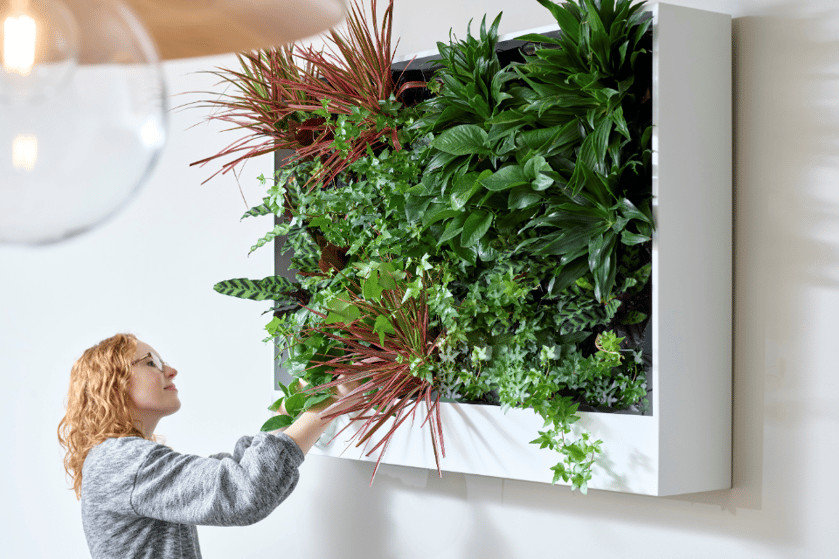
3. Biophilic elements increase productivity, yielding economic benefits.
Not only has biophilia been proven to aid with wellness, but it can also have economic benefits. The article, "The Economics of Biophilia," by Terrapin Bright Green, discusses this. The findings in the article indicated that elements of biophilia, such as plants in the workplace, increased productivity among employees.
The report further stated that increased productivity led to economic benefits from $1,000 per employee to $3.6 million dollars company-wide. These findings break barriers in the greenwall business, and further support the reasons to add biophilic elements into any space.
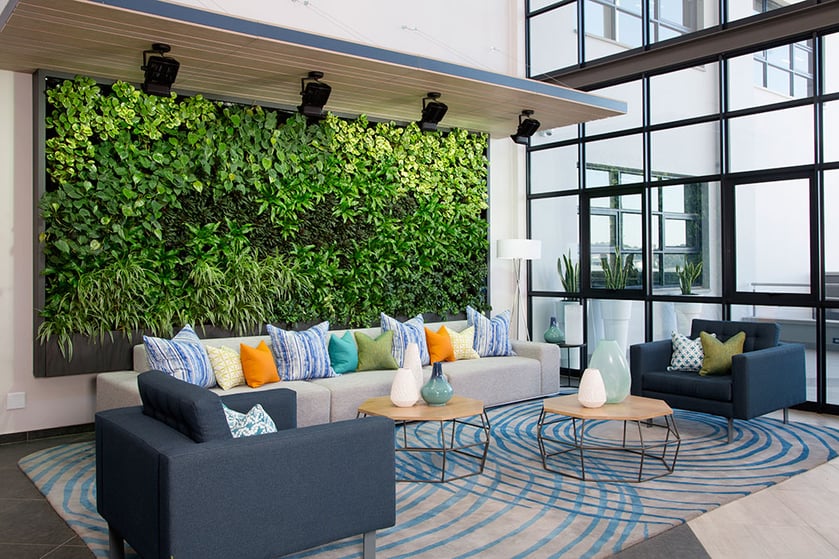
4. Natural elements contribute to higher organizational commitment and job satisfaction.
Employee satisfaction is integral to success and long-term commitment. In the article, “Why We Need More Nature at Work: Effects of Natural Elements and Sunlight on Employee Mental Health and Work Attitudes,” by Mihyang An, Stephen Colarelli, Kimberly O'Brien, and Melanie Boyajian, a study was conducted with with 444 participants across the US as well as India.
Through this study, it was found that an increase in the amount of natural elements, such as sun exposure and plants, resulted in higher organizational commitment and job satisfaction, as well as lower depressed moods. This study adds further support and evidence that there are many benefits of greenwalls in buildings.
.jpeg?width=839&name=File_002%20(3).jpeg)
The articles discussed and outlined above are just the tip of the iceberg when it comes to the research that has been done relating biophilia and natural elements to overall wellbeing. It is clear from the studies done that there are extreme benefits to incorporating greenery and greenwalls into our everyday lives, to live a happier and healthier life not just at home, but in the workplace as well.
Sources
- An, Mihyang, et al. “Why We Need More Nature at Work: Effects of Natural Elements and Sunlight on Employee Mental Health and Work Attitudes.” PLOS ONE, vol. 11, no. 5, 2016, doi:10.1371/journal.pone.0155614.
- Cooper, Sir Cary, and Bill Browning. “The Global Impact of Biophilic Design in the Workplace.” Global Human Spaces Report, 2015, doi:https://interfaceinc.scene7.com/is/content/InterfaceInc/Interface/Americas/Website%20%20Content%20Assets/Documents/Global%20Human%20Spaces%20Report/Global%20HS%20Report%202015_US/wc_globalhumanspacesreport2015us.pdf.
- Hähn, Nalise, et al. “Biophilic Design and Office Planting: a Case Study of Effects on Perceived Health, Well-Being and Performance Metrics in the Workplace.” Intelligent Buildings International, 2020, pp. 1–20., doi:10.1080/17508975.2020.1732859.
- “The Economics of Biophilia.” Terrapin Bright Green, www.terrapinbrightgreen.com/report/economics-of-biophilia/.




